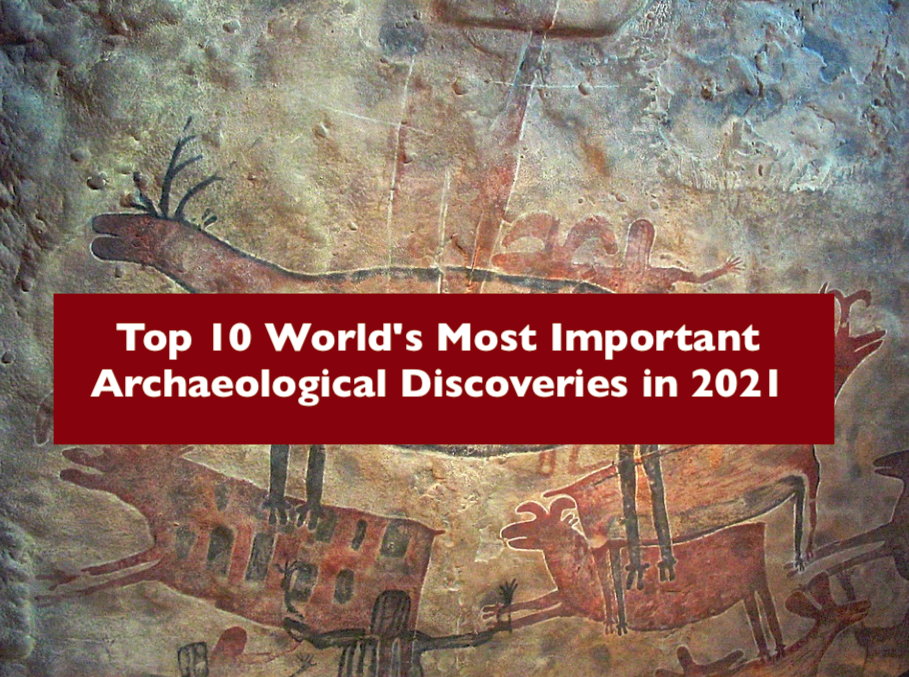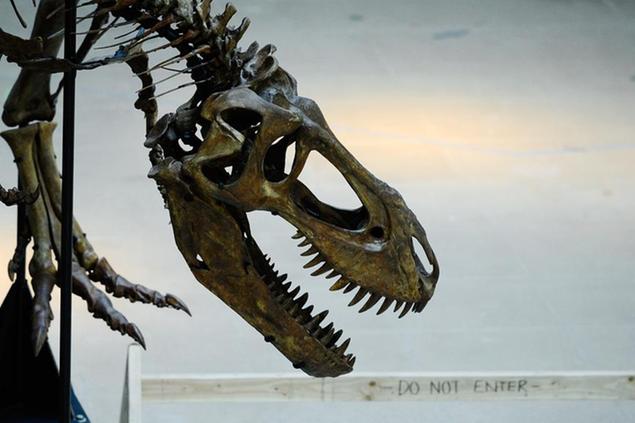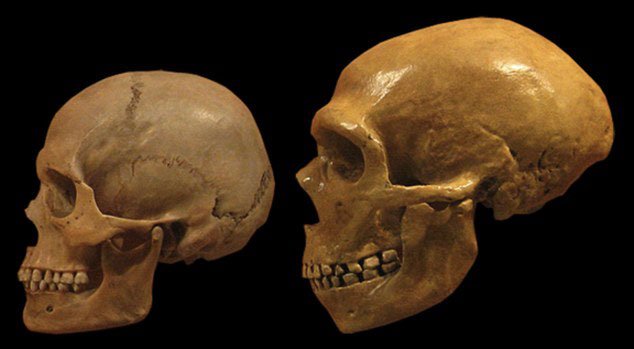Top 10 World’s Most Important Archaeological Discoveries in 2021
While the world spent another year struggling with the epidemic, amazing discoveries continued to be made in the world of archeology. In this list, we have compiled the outstanding archaeological discoveries made in the world in 2021, after a year of many developments in the name of archeology.
With the developing technology and the application of this technology to the science of archeology, discoveries that we could not even imagine a few years ago are now possible. While presenting these exciting archaeological discoveries made in 2021, we look forward to what we may encounter in 2022.
You can see the 10 prominent archaeological discoveries in Turkey in 2021 at this link.
10. Where the Aztecs Sacrificed and Eaten the Spaniards

Before Hernán Cortés took his revenge, a caravan of Spaniards and their allies was sacrificed and defeated in Tecoaque.
New research shows Spanish invaders massacred at least a dozen women and their children in an Aztec-allied town, where residents sacrificed and ate a Spanish caravan they had captured months ago. The inhabitants of Tecoaque, also known as Zultepec, captured a convoy of about 350 allies from 45 infantry and Indigenous groups, which included about 15 male Spaniards, 50 women and 10 children, African and Indigenous Cubans, in 1520. It seems they were all sacrificed within months.
9- The Oldest Known Animal Painting in the World in Indonesia

The stunning cave paintings discovered in Indonesia contain the earliest known depictions of animals on the planet, dating back at least 45,000 years.
Several hand stencils as well as pictures of three pigs were found in the Leang Tedongnge limestone cave on the Indonesian island of Sulawesi. Sulawesi is known to contain some of the world’s oldest cave art, but the newly found paintings may predate any other specimens ever discovered on the island. “The findings add to the evidence that the first modern human cave art traditions arose at an earlier point in human travel, not in ice age Europe as long assumed.”
8- A Unique Parade Chariot in Pompeii

Archaeologists have unearthed a unique ceremonial chariot in a villa just outside of Pompeii, which was buried by a volcanic eruption in 79 AD.
The almost perfectly preserved four-wheeled chariot, made of iron, bronze and tin, was found near the stables of an old villa in Civita Giuliana, about 700 meters north of the ancient Pompeii walls. Massimo Osanna, former director of the Pompeii archaeological site, says the car is the first of its kind to be discovered in the area. Functional vehicles used for transportation and work have so far been found in Pompeii, but the ceremonial chariot has never been found.
7- 10,500 Years of Very Well Preserved Woven Basket in Israel

A large perfectly preserved woven basket dating back 10,500 years has been discovered in the Judean Desert.
The basket was found empty and with the lid closed. There was only a small amount of soil inside, and the researchers hope it will help identify what was inside the basket. Researchers believe this basket is probably the oldest of its kind. The find was unearthed in a cave in the Judean Desert. To date the basket, samples from its four different parts were analyzed. The researchers concluded that the object was manufactured in the Pre-Pottery Neolithic (PPN) period, about 10,500 years ago.
6- The 4,000-Year-Old Stone Slab Was the First Map of Europe

A newly uncovered Bronze Age slab may be the oldest three-dimensional map in Europe, researchers say.
The slab measuring 2 meters by 1.5 meters, first unearthed in 1900, was found again in the cellar of a castle in France in 2014. Archaeologists, who have studied the 4,000-year-old patterns etched into the stone, say they believe the drawings are a map of an area in the Brittany region of France. If true, the stone slab would be the oldest three-dimensional map of a known region in Europe.
5- The 3,000-Year-Old ‘Lost Gold City’ Unearthed in Egypt

Archaeologists have unearthed the ‘Lost City of Gold’, believed to be the largest ancient city found in Egypt and buried under sand for thousands of years. Experts say this discovery is one of the most important finds since Tutankhamun’s tomb was uncovered.
The city is 3,000 years old, dating to the reign of Amenhotep III, and continued to be used by Tutankhamen and Ay afterwards. Dr. Zahi Hawass says the city known as Aten is the largest ancient city ever found in Egypt. The history of the city dates back to the reign of Amenhotep III, who reigned from 1391 to 1353 BC and is considered one of Egypt’s most powerful pharaohs. Dr. “Many foreign teams searched for this city but never found it,” Hawaas said. Also, archaeological work is ongoing and we expect the team to find untouched tombs full of treasures.” says.
4- Mosaic Base Describing Scenes from the Iliad in England

A Roman villa containing a rare mosaic depicting scenes from Homer’s Iliad has been found under a farmer’s field in England.
The mosaic found in Rutland is described as the first of its kind in England. The mosaic and the surrounding villa complex are thought to belong to a wealthy person from the late Roman period. The mosaic that forms the floor of the villa, which is thought to be a dining or entertainment area, measures 11 meters by 7 meters. Mosaics were used regularly in private and public buildings in the Roman Empire and often included famous figures from mythology. But the Rutland mosaic is considered unique in the United Kingdom as it includes Achilleus and his battle with Hector at the end of the Trojan War.
3- The World’s Oldest Known Beads in Morocco

Analysis of beads found in Morocco provides information on how long people have been using these accessories: at least 142,000 to 150,000 years.
The researchers date the 33 tiny perforated seashells to that time period—about 10,000 to 20,000 years earlier than previously recorded. Prehistoric jewelry discovered at Bizmoune Cave shows how early humans passed on information about themselves to others. The seashells were found in a layer of sediment that dated to at least 142,000 years ago, stretching the earliest records of such human activity back from the Middle Stone Age to the Middle Pleistocene epoch, according to the study. The discovery shows that people in North Africa made ornaments long before their peers in other parts of Africa and Asia.
2- Footprints Retrace the History of Humans Arriving in America

Fossilized human footprints found in New Mexico reveal that humans lived in the Americas during the peak of the last ice age.
The footprints found in White Sands National Park in New Mexico provide the oldest definitive evidence of human activity in the Americas and provide insight into life 23,000 years ago. The footprints were formed in soft mud on the edges of a shallow lake in what is now White Sands. The researchers dated these traces using radiocarbon dating of the seed layers above and below the layer with the footprints. The dates of the footprints differ and confirm human presence here for at least two millennia. Also, the oldest tracks are about 23,000 years old, which corresponds to the peak of the last glacial cycle, making them the earliest known human footprints in the Americas.
1- Vikings Was Exactly 1,000 Years Ago in America

The Vikings had a settlement in North America 1,000 years ago, centuries before Christopher Columbus came to America.
Scientists say a new dating technique that analyzes tree rings provides evidence that Vikings inhabited an area in Newfoundland, Canada, in 1021 AD. It has long been known that Europeans reached the Americas before Columbus’ arrival in the New World in 1492. But researchers have now proposed an exact date for the first time. Writing in the journal Nature, the scientists analyzed tree rings from three pieces of wood cut for the Scandinavian settlement at L’Anse aux Meadows. Using an atmospheric radiocarbon signal produced by a dated solar storm as a reference, the researchers said they were able to pin the “exact year the tree was cut” to 1021.



